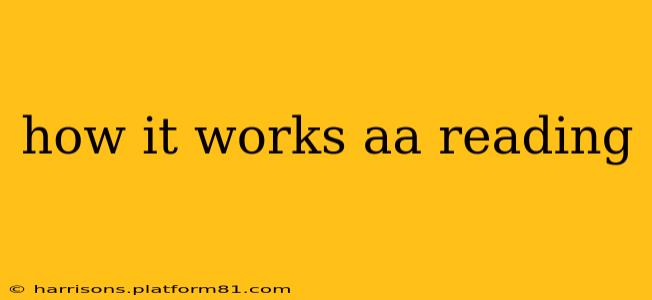How Does Assisted Reading Work? A Comprehensive Guide
Assisted reading, also known as aided reading or supported reading, encompasses a range of techniques and technologies designed to improve reading comprehension and fluency for individuals facing reading challenges. It's not a single, monolithic approach, but rather a spectrum of methods catering to diverse needs and learning styles. This guide delves into the core principles and various methods employed in assisted reading.
What are the common challenges addressed by assisted reading?
Many individuals benefit from assisted reading, including those with:
- Dyslexia: A learning disorder that impairs reading fluency and comprehension.
- Reading disabilities: A broad category encompassing various conditions impacting reading skills.
- Learning difficulties: Difficulties processing information, impacting reading acquisition.
- Visual impairments: Conditions affecting visual acuity, making reading challenging.
- English Language Learners (ELLs): Individuals learning English as a second language.
- Students needing extra support: Individuals who may require additional help to improve reading skills.
How does Assisted Reading improve reading comprehension?
Assisted reading uses a variety of strategies to help improve reading comprehension. These strategies break down complex reading tasks into smaller, more manageable components, allowing readers to focus on specific areas of difficulty. Some key approaches include:
What assistive technologies are used in assisted reading?
Several technological advancements significantly aid in assisted reading:
-
Text-to-speech software: This technology converts written text into audible speech, allowing readers to hear the words while simultaneously following along visually. This is particularly helpful for dyslexic readers or those struggling with phonics.
-
Speech-to-text software: This allows readers to dictate their thoughts and have them transcribed into text, helpful for note-taking, writing, and generating content.
-
Reading apps with features like: Many apps offer customizable fonts, highlighting tools, adjustable text size, and built-in dictionaries. Some even provide personalized feedback and progress tracking.
-
Adaptive learning platforms: These platforms analyze a reader's performance and adjust the difficulty level accordingly. They often provide targeted instruction based on individual needs.
-
Augmentative and alternative communication (AAC) devices: These devices support communication for individuals with significant challenges with speaking or writing. Many have text-to-speech capabilities and assist with literacy development.
What are some strategies used in assisted reading?
Beyond technology, various educational strategies support assisted reading:
-
Guided reading: A teacher or tutor provides support and guidance during reading, offering prompts and clarifications.
-
Repeated reading: Practicing reading the same text multiple times improves fluency and comprehension.
-
Chunking: Breaking down longer texts into smaller, more manageable segments.
-
Graphic organizers: Visual tools (mind maps, flow charts) help organize information and enhance comprehension.
-
Differentiated instruction: Tailoring teaching methods to match individual student needs.
What are the benefits of assisted reading?
Assisted reading offers numerous benefits:
- Improved reading fluency: Readers gain confidence and speed.
- Enhanced comprehension: Readers better understand what they are reading.
- Increased reading enjoyment: The process becomes less frustrating and more engaging.
- Improved academic performance: Reading skills translate to better outcomes across subjects.
- Boost in self-esteem and confidence: Readers feel more empowered and capable.
Is assisted reading only for children?
No, assisted reading benefits individuals of all ages. Adults with acquired reading disabilities or those seeking to improve their reading skills can greatly benefit from assisted reading strategies and technologies.
How can I find assisted reading resources?
Resources are available through various channels:
- Schools and educational institutions: Many schools offer support services for students with reading difficulties.
- Therapists and specialists: Occupational therapists, speech-language pathologists, and reading specialists can provide personalized support.
- Online resources and apps: Numerous websites and applications offer assistive reading tools.
- Libraries and community centers: Often provide reading programs and workshops.
Assisted reading is a powerful tool for empowering individuals to unlock the joy and benefits of reading. By understanding the various methods and technologies available, we can help individuals of all ages and abilities reach their full reading potential.
